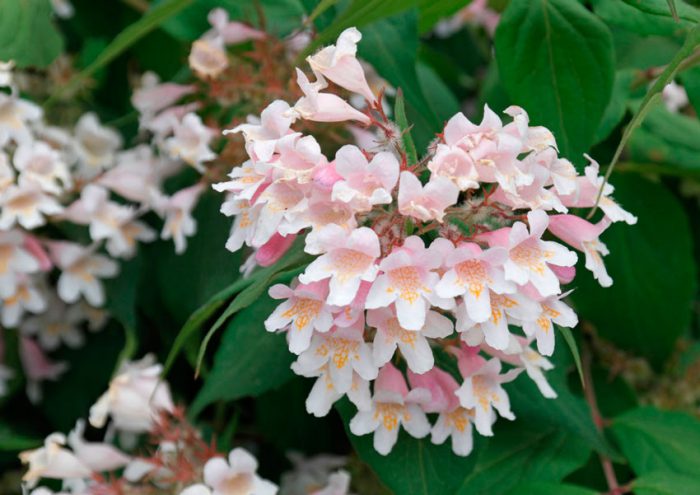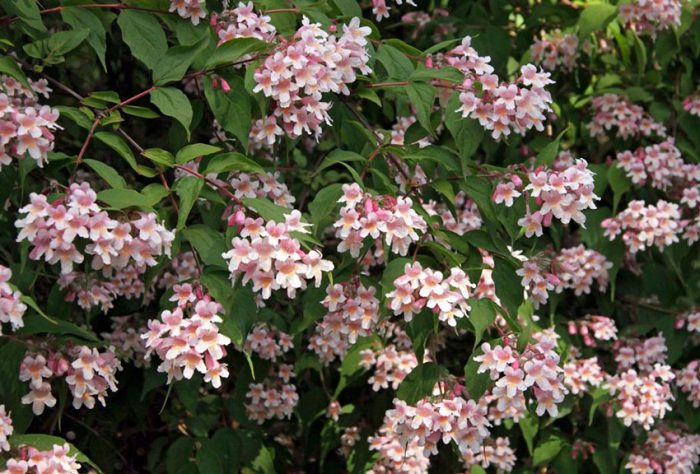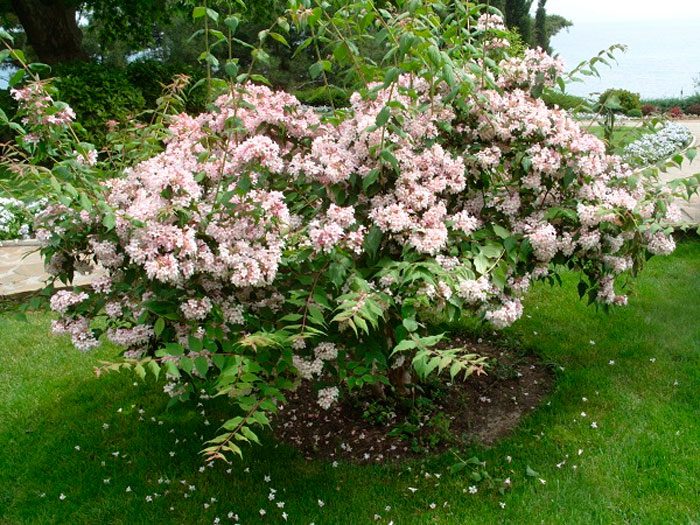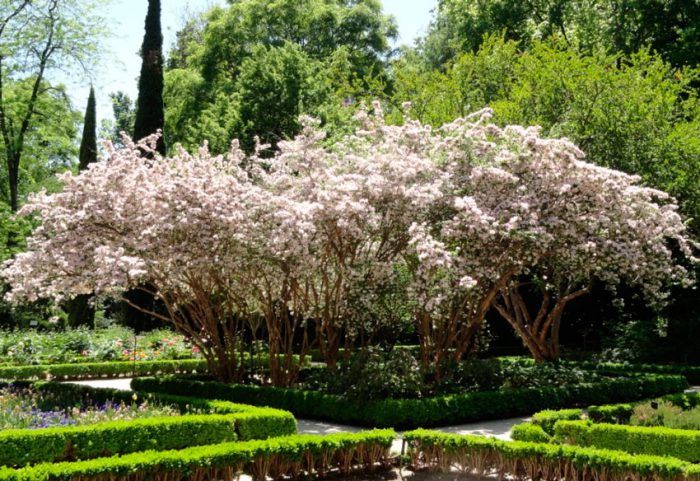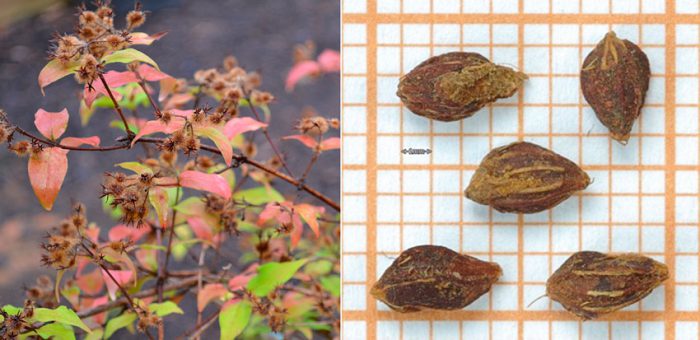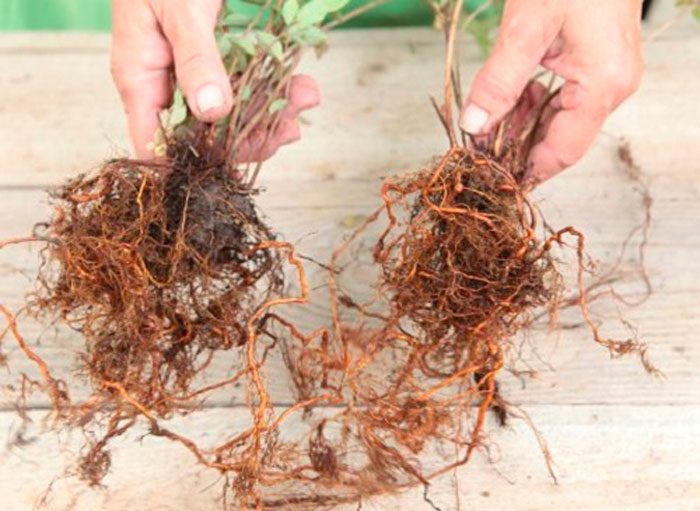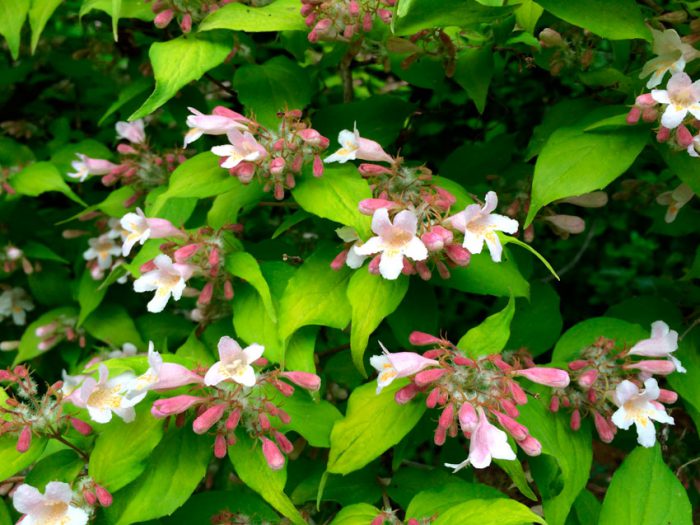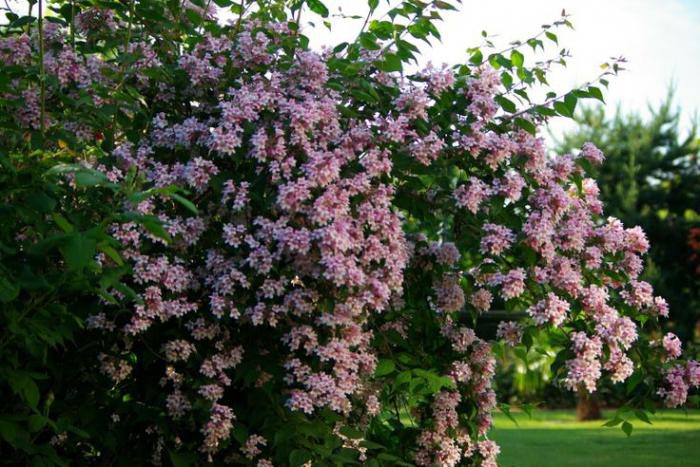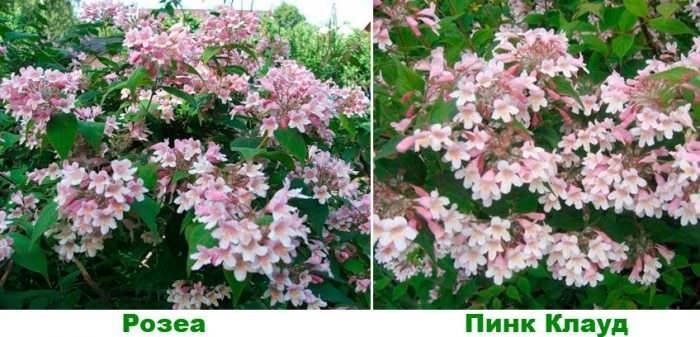The flowering plant Kolkwitzia belongs to the monotypic genus of the subfamily Linnaeus of the honeysuckle family. This genus is represented by only one species - pleasant or lovely (Kolkwitzia amabilis), which is a shrub. In nature, such a plant can be found in the mountainous regions of Central China, as well as in other regions with a temperate climate. This shrub was named after the German botanist R. Kolkwitz. It was introduced to European countries in 1901, while the first flowering of such a plant in unusual conditions for it was noted only in 1910.
Content
Features of colquation
Kolkvitsia is a deciduous shrub that reaches a height of 2-3.5 meters. On the surface of young stems there is pubescence, consisting of short hairs, while the old shoots are covered with a brown-red bark, it exfoliates in plates, which is typical for all representatives of the honeysuckle family. If conditions are favorable for colquation, then a dense root growth appears. Opposite paired leaf plates of oval shape and deep green color in length can reach 3.5-8 centimeters. In autumn, the foliage turns yellow. Five-lobed graceful bell-shaped flowers have a light yellow color on the inner surface and pink on the outside. The unusually lush bloom lasts about half a month in spring and summer. There are so many flowers that it is impossible to see the foliage because of them. The bristly fruits are dry.
Planting kolkvitsii in open ground
What time to plant
For planting kolkvitsiya, you should choose spring time, while the soil should warm up well. The planting site should be sunny and protected from strong gusts of wind, if you wish, you can grow the colquia in a little shade. Remember that areas that are covered with melt water for a long time in spring are not suitable for planting this shrub. The substrate should be nutritious, light, neutral and well-drained.
Landing features
The landing pit should be prepared half a month before the scheduled landing day. In depth, it should be about 0.4 m, while its length and width can vary from 0.5 to 0.6 m.Then the pit should be covered with soil mixture, which should include sand, turf and humus (1: 2 : 2). For half a month, such a mixture will thicken well and settle.
It is best to choose seedlings for planting that are 1 or 2 years old. Immediately before planting the plant in open soil, it will be necessary to shorten the overly long roots. Then the seedling is placed in a prepared pit, which is filled with the same soil mixture, but one more bucket of wood ash or from 80 to 130 grams of complex mineral fertilizer must be poured into it. Remember to compact the soil well. The planted plant needs abundant watering. After the liquid is completely absorbed into the ground, the surface of the trunk circle must be covered with a layer of mulch.
Caring for colquia in the garden
When growing colquitsia, it is important to take into account that the soil in the trunk circle should not dry out in any case. For irrigation, use settled water, which should not be cold.
In order for the shrub to develop and grow normally, it must be fed in a timely manner. In spring, for this purpose, an infusion of mullein (1:10) is used, while in the first summer weeks a solution of double superphosphate is introduced (for 10 liters of water from 30 to 50 grams of substance). Take 10 liters of nutrient mixture for 1 bush.
After the end of flowering, it is no longer possible to feed the plant, but formative pruning will need to be done. At the very end of the season, it is necessary to remove all young shoots that did not have time to ripen by the beginning of the winter period. In the spring, you need to make sanitary pruning, for this you should cut out all the injured, dried out branches and stems damaged by frost, pests or disease, as well as those that thicken the bush. Throughout the summer period, it will be necessary to remove the root shoots in a timely manner, which grows extremely intensively in favorable conditions for colquation.
Transfer
Such a shrub tolerates transplantation very well. To do this, the bush must be carefully dug out, trying not to injure its root system, and then it is carefully transferred to the prepared planting hole, which should be covered with a soil mixture saturated with nutrients. The transplanted bush needs abundant watering. After the liquid is completely absorbed into the soil, the surface of the trunk circle will need to be covered with a layer of mulch.
Reproduction of colquitsia
Such a plant can be propagated by seed (generative) method, as well as vegetative - by layering, cuttings and dividing the bush.
Seed method
Cultivation of colquitsia from seeds takes quite a long time and does not always end successfully. For stratification, the seeds are placed in a refrigerator on a vegetable shelf for 3 months. They are sown in April using a long container filled with soil mixture, which includes peat, garden soil and sand. The container must be covered with foil and transferred to a warm place. The seedlings will have to be grown indoors until the next spring.
Dividing the bush
You can propagate the shrub by dividing the bush during transplantation. A thorough examination of the roots of a dug plant should be carried out, while dried and rotten roots should be removed. Then the bush is cut into several parts, while it should be borne in mind that each delenka must have powerful stems and developed roots. Places of cuts must be sprinkled with crushed coal. It is necessary to plant such delenki in prepared pits. This procedure is carried out in the same order as the initial landing.
Layers
Rooting cuttings is the most effective propagation method. The selected coppice shoot must be bent to the soil surface and placed in the prepared groove. In the place where the shoot comes into contact with the soil, an incision must be made and treated with a growth stimulating agent. The shoot is fixed in this position and covered with soil, while its upper part should remain free.During the summer, do not forget to water the cuttings in a timely manner so that the soil around it is always slightly damp. After a short time, roots will grow from the buds that are underground. It will be possible to separate such a layer and plant it in a new place only next spring.
Reproduction of colquitia by cuttings
Reproduction by cuttings is carried out in spring and autumn. So, in May, you should cut off semi-lignified cuttings, which are planted in a tub filled with soil mixture for seedlings. For the winter, this container, if desired, is removed to the basement. Cuttings harvested in the fall take root better. To do this, cuttings cut in autumn must be wrapped in polyethylene and removed to the basement, in spring they are treated with Kornevin and planted in a greenhouse, where they will stay until the next spring period. For planting in open soil, such a seedling must be taken together with an earthen clod. After 1 or 2 years after planting in a permanent place, these shrubs will begin to bloom.
Diseases and pests
Such a plant is resistant to diseases and pests, but if the weather is hot, then spider mites, aphids or thrips can settle on the bush. In order to get rid of these pests that suck the juice from the plant, use a solution of acaricide (Aktara or Aktellik), 2 or 3 treatments will be needed, while the duration of the break between them is 7 days. Caterpillars eating its leaves can also settle on colquitsia. With a small number of them, manual collection should be made. If there are a lot of caterpillars, then spray the bush with an insecticide.
After flowering
If, according to forecasters, the next winter will be with little snow and very cold, it is imperative to cover the colquation. After the air temperature is set at a minus mark, it will be necessary to fill the trunk circle with the size of the crown projection with a layer of peat, wood chips or bark, the thickness of which should be from 10 to 12 centimeters. If the shrub is not yet 5 years old, then it is bent to the soil, covered with spruce branches, and in winter time a layer of snow is thrown over it. If desired, the crown of the plant is wrapped in spunbond or lutrasil, it is removed only in the second half of April, after the air temperature is above zero degrees. If the winter turns out to be extremely frosty, then the colquitia may freeze slightly, but in spring it recovers extremely quickly. At the same time, experienced gardeners note that the older the plant, the higher its frost resistance.
Growing in the suburbs
If kolkvitsiya is grown in regions with a cold climate, then its young shoots do not always have time to ripen before winter, and therefore, in the springtime, dry tips can often be seen on the bush. They should be cut before the plant blooms. In order for the shoots to ripen faster, when the bush fades, it is necessary to reduce watering, stop applying fertilizing, and also cover the near-stem circle with a layer of mulch (peat or compost combined with sawdust or foliage), the thickness of which should be from 5 to 10 centimeters. This will not only protect the roots of the plant from winter frosts, but also force it to accumulate nutrients. In late autumn, you need to cut off almost all young growths. In this case, lignified stems with a small number of young growths should remain on the bush.
Types and varieties with photos
There are only 2 varieties of lovely colquia, namely:
- Rosea... The color of the flowers is bright pink.
- Pink Cloud... The color of the flowers is deep pink.

